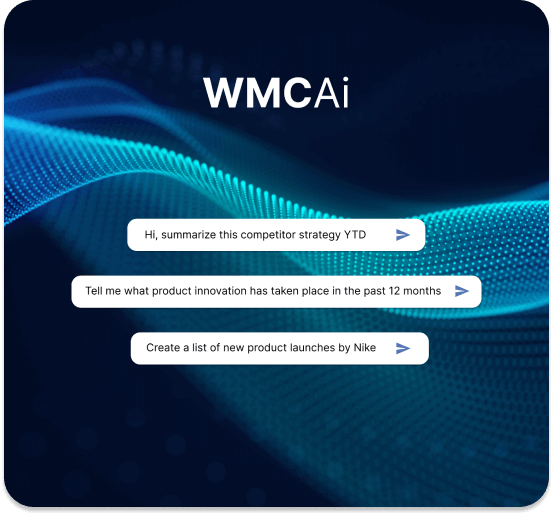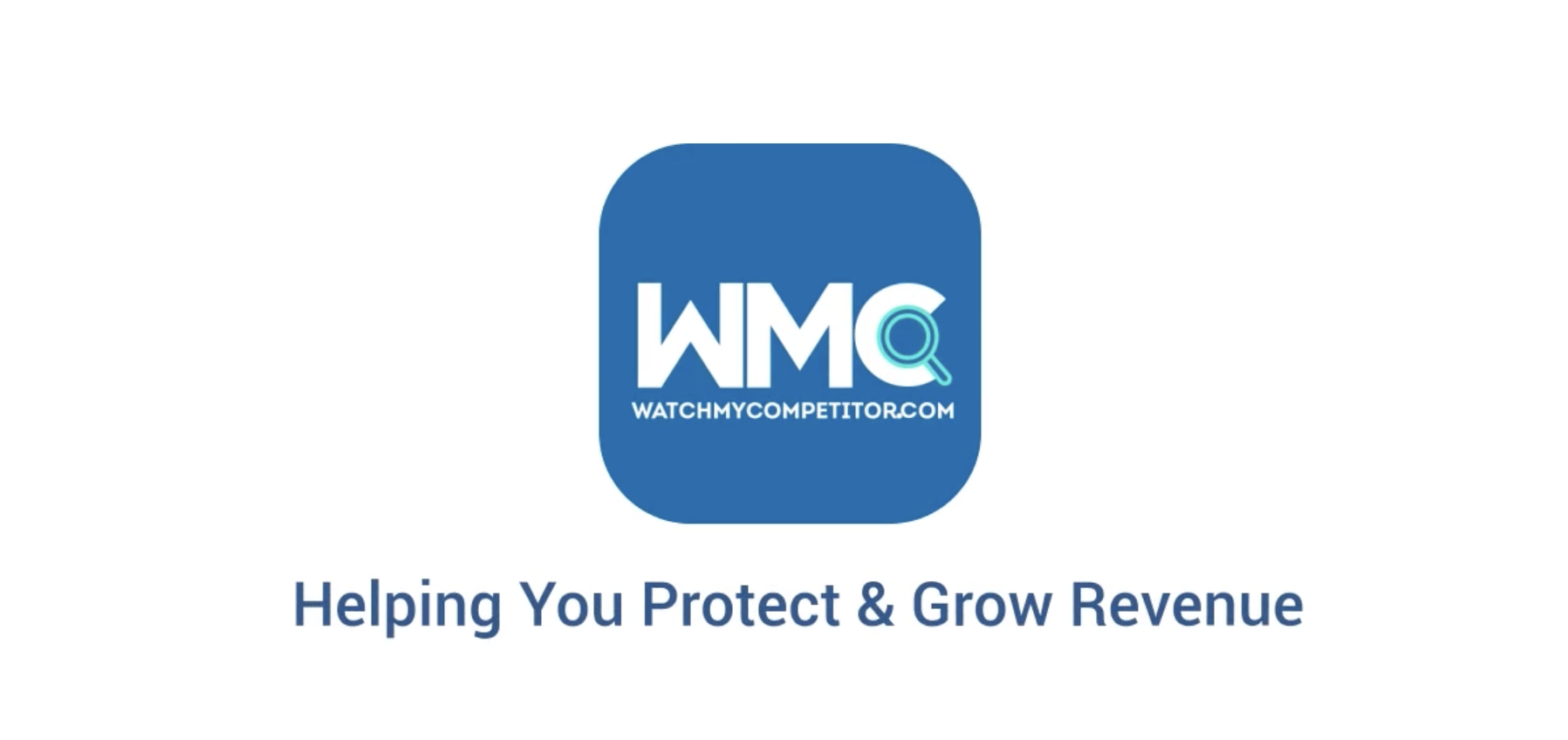Summary
- There are 6 important ways businesses can monitor competitors
- Competitor monitoring enables businesses to make informed strategic decisions
- When looking at how to monitor competitors, there are 6 important steps to take into consideration

Introduction – How To Monitor Competitors
Do you have a clear, comprehensive and up-to-date picture of what your competitors are saying and doing?
Do you know how you compare across specific criteria?
Do you know their strengths and weaknesses and how they stack up against yours?
Are you clued up on the immediate and longer-term threats competitors pose to your revenue and profits?
61% of companies have missed a strategic opportunity or suffered a financial setback because they didn’t adequately understand the competitive landscape.
Furthermore, companies that fail to monitor their competitors are more likely to experience unexpected market disruptions and lose market share to competitors.
Not knowing your competitors’ actions and strategies makes it difficult to nullify the threats they pose or capitalise on opportunities. It can make you slower to respond to risks or lead to strategic decisions that are ill-informed.
Data shows that understanding the competitive landscape is important to almost 9 out of 10 businesses. And that they’re more likely to achieve above-average growth and profitability and make better strategic decisions.
So how do you make sure you’re informed and ready for what the market throws at you? How do you help people across your organisation to make smarter decisions faster?
It starts with understanding how to monitor competitors effectively.
What Is Competitor Monitoring?
Competitor monitoring is the process of tracking what your competitors are doing and saying in an attempt to better understand their strengths, weaknesses, potential threat to your organisation and the strategies they’re using.
In decades gone by, that may have involved slow and steady research using manual processes and inconclusive results. More recently, it’s become about using competitor intelligence software tools to track competitors’ online presence and mentions and market data such as league tables and review scores.
How To Monitor Competitors: 6 Important Examples
When it comes to monitoring competitors, there are multiple factors to focus on, depending on your industry and position within an organisation.
Here are 6 areas you can use competitor monitoring for:
1) Price tracking
69% of buyers say that price is the most important factor in their purchasing decision. Knowing competitor price points and which are offering consumers the best deals can provide insight into their strategies and where you could be winning or losing.
Pricing your own products and services without this intelligence means more guesswork and less confidence. Monitoring your competitors makes it easy to build a clear, real-time picture of market pricing.
2) Product developments
Companies that successfully introduce new products grow 60% faster than those that don’t. Being the first to know about product launches, updates, withdrawals, feature add-ons and more can offer insights that inform your own product roadmaps, leading to greater success and minimising the impact of what others are doing.
If 95% of products fail after launch, learning from the strengths and weaknesses of others can help you avoid being part of that statistic.
3) Website monitoring
A competitor’s website can often contain a wealth of valuable information. Whether it’s their pricing, products, news, thought leadership content or even the key messages they lead with, it can all reveal a lot about their strategies and help you identify strengths and weaknesses. Competitor monitoring helps you know when any of this content changes, so you can plan or respond accordingly.
4) Financial tracking
86% of executives say that understanding competitors’ financial performance is important to their own company’s success. A lot of that information is published online and accessible if you know where to look. It can give you a clear indication of which competitors’ strategies are working or not – which in turn can help you adapt, evolve and reprioritise as an organisation.
Competitor monitoring allows you to dive into specific aspects of financial performance to build up a clear and accurate picture of the market.
5) Social media monitoring
Businesses that fail to monitor their competitors’ social media activity risk falling behind in terms of customer engagement and insights, which can lead to lost market share and revenue.
Seeing what topics competitors are talking about, what their opinions are and how consumers are responding can give you a clear sense of their strategy and what’s resonating with your potential customers.
Your voice and opinion will still be yours but competitor monitoring can help you to clean up your strategy and make informed decisions about frequency and channels.
6) Investment tracking
Companies that closely monitor their competitors’ investment activity are more likely to identify emerging trends and opportunities for growth. Whether it’s an outward investment in another company, new technology or more people, or an inward investment that’s likely to fuel future growth, investment news can point to major changes in your industry.
It could represent a new trend, which organisation needs to pivot towards and capitalise on, or a turnaround story which could undermine peers’ market share. Therefore, competitor monitoring can help you understand and prepare for what’s coming rather than reacting further down the line.
Why It’s Important To Know How To Monitor Competitors
Make informed strategic and operational decisions – monitoring competitors gives you a fuller, clearer picture of the market and your place within the wider industry. This eliminates a high degree of guess-work and subjectivity, and enables a higher degree of data-driven decision making. Companies that harness data are on average more productive and profitable than their peers.
Respond effectively to threats and opportunities – by learning what competitors are saying and doing in real-time and adapting and responding quickly and intelligently. You can take action before it’s too late.
Stay or get ahead of the competition – by making sure your sales and marketing functions and other parts of the organisation are the best-informed in the market and don’t lose ground to rivals who are also using competitor monitoring.
How To Monitor Competitors: 6 Important Steps
Step 1: Outline your goals
Be clear about what you want to achieve. For example, how will you use the data you gather? How will you measure its value to your business? Can you evaluate the potential cost of losing customers and market share? Or the potential value of growing it? Do you have goals focused on specific parts of your business, such as recruitment or product innovation? Or do you need to capture intelligence on a broad range of criteria?
Whatever your goals are, clarifying them at the outset will keep your competitor monitoring activity focused.
Step 2: Choose your competitor monitoring tools
Once you’ve clarified your goals, your next step is to identify the tools you need to monitor your competitors. There are a range of options available to you, from specialist social media monitoring tools to all-encompassing competitor tracking and competitor intelligence software.
Explore the features and products each provide, align them with your goals and see what additional benefits they offer that will deliver additional value.
For example, how easy is it to set up? Are there experts on hand to support you through the process? Is the dashboard user-friendly and is the data presented in a way that’s accessible and easy to share? Does the tool integrate with other software, such as your existing communication platforms or the data visualisation tools you’re familiar with?
Step 3: Define the key metrics required
You know what you want to achieve and have chosen a tool capable of fulfilling that goal. As part of the set up, you’ll need to specify what you intend to track. The examples section above has some useful suggestions.
You might want to focus on price, product, personnel changes, marketing activity, investments or a combination of a few.
This should all be driven by the goals you’ve outlined, so that you’re not handling data you don’t need. Or at least the most important data is being surfaced for easy access and analysis.
If your software tool provides market analysts as part of the set up, they’ll help you identify the competitor monitoring metrics you need and how deep to drill into them. This will help you get more out of your investment, allowing you to make smarter strategic decisions as an organisation.
Step 4: Analyse your data
Once set up, your data will start to arrive. Whether you have analysts in-house or use those provided by the platform team, identifying the best way to interpret and draw conclusions from the data is the key to turning insights into actions. You’ll be able to share competitive intelligence, not just raw data, making it easier for teams and individuals to use.
If you’re using a platform that doesn’t offer human analysis and curation, be mindful that you’ll need to sift through the data to find the most relevant insights, then analyse them. This can slow your ability to respond to threats and opportunities. Finding a platform that offers this as standard will save you time and lead to faster decision-making.
Step 5: Share competitor monitoring insights
If you’re part of a marketing and insights team, you may be using competitor monitoring for your own benefit – to inform your strategies and campaigns. But intelligence of this nature can have far-reaching benefits for the whole organisation.
You can equip sales teams with insights into the strengths and weaknesses of direct competitors. Help product teams validate and compare their roadmaps and launches. Or keep senior management informed on how the market is evolving and what threats and opportunities exist.
As referenced above, there are advantages in being able to integrate with your existing systems. Adopting another tool can be a barrier to team engagement, so sharing alerts, charts or graphs in formats and channels they’re working with every day can make it a smooth transition.
Step 6: Using the intelligence to improve
Finally, in order for people in your organisation to make good use of competitor monitoring, it helps to designate clear lines of responsibility and pathways for alerting other stakeholders to important insights. You may want to introduce processes or feedback loops that allow people to share how they’ve used the intelligence to make informed strategic decisions.
To build a data-driven culture, it helps to share evidence of how the intelligence is contributing to better results. It will give others across the organisation the confidence to use the intelligence they’re receiving. But it also helps to make people accountable for using it.
This can all take time but doing the right things from the start will help you to demonstrate the value of competitor monitoring in helping you to protect and grow your revenue.
Make Smarter Decisions Faster With WatchMyCompetitor
Unlike other intelligence solutions that serve up hard-to-mine unfiltered data, or which collate insights into periodic reports that lack immediacy, WatchMyCompetitor is the complete competitor intelligence platform.
We use AI to track your competitors’ global digital footprint in real time, so you don’t miss anything important. While our market experts analyse and curate the most relevant competitive insights on your behalf.
That means no more sifting through unmanageable volumes of data. You get fast access to relevant, timely intelligence to optimise strategies, outsmart the competition and protect and grow your revenue.
Don’t let your competitors gain an advantage. Book a demo today.








